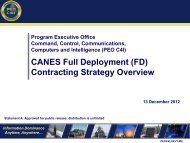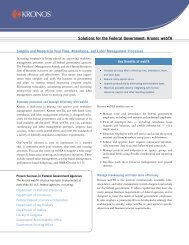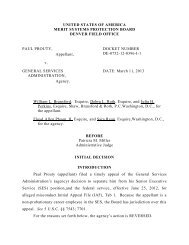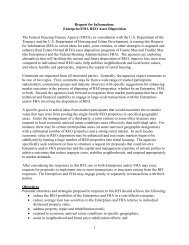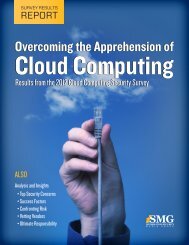Wastebook - Senator Tom Coburn - U.S. Senate
Wastebook - Senator Tom Coburn - U.S. Senate
Wastebook - Senator Tom Coburn - U.S. Senate
Create successful ePaper yourself
Turn your PDF publications into a flip-book with our unique Google optimized e-Paper software.
<strong>Wastebook</strong> 20131. Paid to Do Nothing – (Government wide) At least $400 millionThe first session of the 113 th Congress will likely go down in history as the least productive in history,more notable for what it do not do than what it did. A mere 57 laws were enacted, no budget could beagreed upon, and not a single regular appropriations bill to fund government operations passed ontime resulting, in part, for a 16 day government wide shutdown in October. Through it all Congresswas paid. And eventually so were all the other federal employees, including many deemednonessential and therefore not permitted to report to work.The White House estimates it cost $2 billion to provide back pay to federal employees “for servicesthat could not be performed” during the shutdown is roughly $2.0 billion. “Total compensation costs,including benefits, are about 30 percent larger, in the range of $2.5 billion.” 11Of course it is not the fault of employees who are non-essential, formally deemed “non-exempt” frombeing furloughed, 12 for the failure of Congress to do its job, which is essential to the functioning of ourgovernment.More than 100,000 non-essential federal employees being paid a salary of at least $100,000 werefurloughed as non-essential. Each of these was paid $4,000 for the time off of work during theshutdown.More than 100,000 federal employees being paid asalary of at least $100,000 were deemed nonessentialand not required to work during thegovernment shutdown.Again, it is not the fault of these civil servants thatCongress did not do its job and, like everyone else, theyhave bills to pay. But it is truly unfair to charge billionsof dollars to pay others not to work to taxpayersworking to cover their own bills and the bills of thegovernment. This is especially true when the nonessentialfederal employee is being compensated morethan twice the average U.S. family income of $51,000. 13A sampling of just three federal agencies found morethan 35,500 federal employees earning $100,000 ormore who were furloughed for performing nonessentialduties (and then paid for not performingthose duties).The Department of Treasury “furloughed 21,751 nonexcepted/non-essentialemployees with an annualsalary of $100,000.00 or more during the governmentshutdown.” 14 The adds up to nearly $84 million spentto pay just these employees to do nothing. Meanwhile,the Administration furlough as non-essential “nearlyall of the Treasury Department’s Office of ForeignAsset Control (OFAC), which implements the U.S. government’s financial sanctions against countriessuch as Iran and Syria.” 15 And while taxpayers continued to file returns and make payments duringthe shutdown, they “could not receive assistance” from the IRS. 16“During the shutdown of the federal government in October 2013, the Department of Veterans Affairsfurloughed 1,406 employees who are paid an annual salary of $100,000 or more (356 in the Office of3



